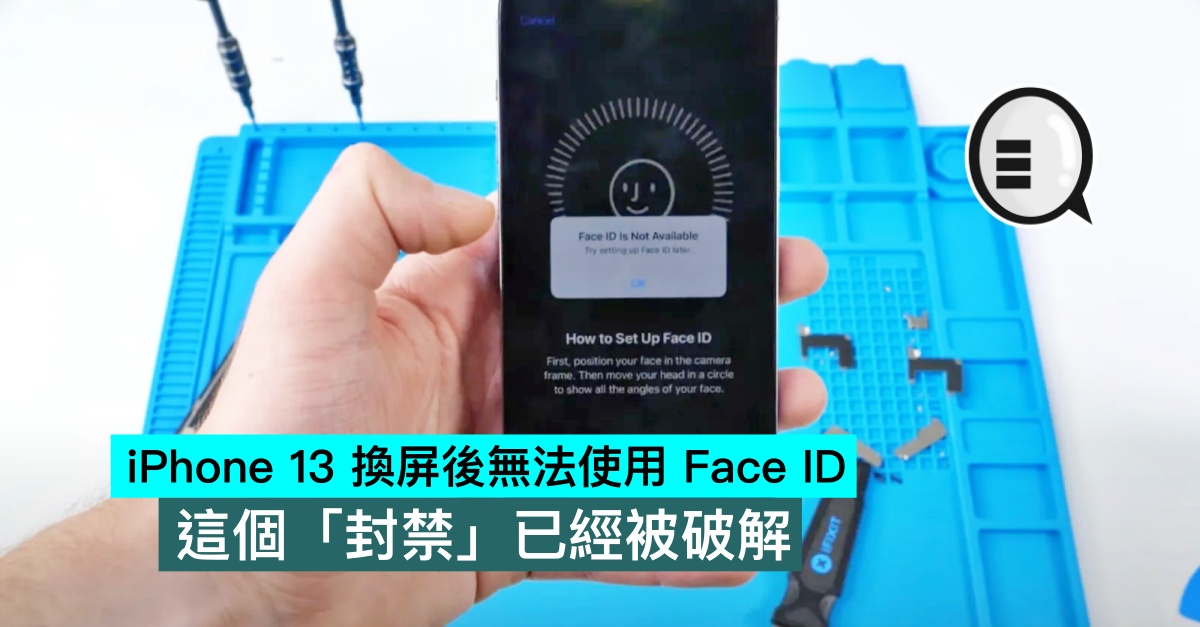Recently, it is reported that if the iPhone 13 series replaces a third-party screen, it will cause permanent failure of Face ID. Previously, iFixit stated that battery replacement of the iPhone 13 series will no longer cause the device to block the same as before, but it is indeed a bit puzzling that changing the screen will cause the permanent failure of Face ID.
 Apple’s these practices, it is ugly to say that it monopolizes repair channels , Not only on the iPhone, other series have this situation more or less, which is also the reason for the high cost and difficulty of repairing Apple devices.
Apple’s these practices, it is ugly to say that it monopolizes repair channels , Not only on the iPhone, other series have this situation more or less, which is also the reason for the high cost and difficulty of repairing Apple devices.
However, the “ban” measures that caused Face ID to fail due to the replacement of the screen have been cracked. Recently, the Youtube channel Phone Repair Guru shared that the screen of the iPhone 13 was replaced with another original screen video, which of course appeared The problem of “Cannot verify that this iPhone has a real Apple display” is that you are not allowed to use Face ID.
However, he said that there are indeed some workarounds. Face ID is enabled, but most repair shops will not do this because it is too complicated. British third-party repair shop iCorrect also stated that it is possible to replace the iPhone 13 screen without losing the Face ID components. In a blog post, iCorrect explained why the iPhone 13 disabled Face ID when changing the screen, and also introduced the background since Apple introduced this technology on the iPhone X.
The blog post wrote:
According to our research, the iPhone uses a microchip embedded in the screen to interact with Screen to communicate. This screen microchip is an integrated circuit (electronic components are assembled into a unit), responsible for converting your analog touch (the analog signal generated by your finger on the screen) into a digital signal (for your iPhone to understand, because your iPhone is a miniature computer and does not understand analog signals)……
……The screen integrated circuit of iPhone 13 now not only acts as ADC, enables True Tone, and carries non-genuine information ROM, but also Communicate with Face ID. We believe that this communication with Face ID is a bug in iOS 15. But it shows us how complicated screen integrated circuits will become in the future. We expect that the next-generation iPhone will contain two biometric technologies, namely Face ID and Touch ID on the screen. We expect that when the screen is replaced in the future, the Touch ID in the screen will need to be disabled.
To put it simply, the iPhone screen is not only a screen, but also has built-in components and chips for accessory certification, and accessories have their own unique The coding of the authentication chain cannot be easily changed unless the screen and these authentication parts are all transplanted and replaced, but the replacement steps and difficulty are very high, and the cost and risk are also higher. If you are worried about high maintenance costs due to screen damage, it is recommended to purchase an Apple Care+ guarantee for your love machine. Official maintenance is the kingly way.
Note: This article have been indexed to our site. We do not claim legitimacy, ownership or copyright of any of the content above. To see the article at original source Click Here












